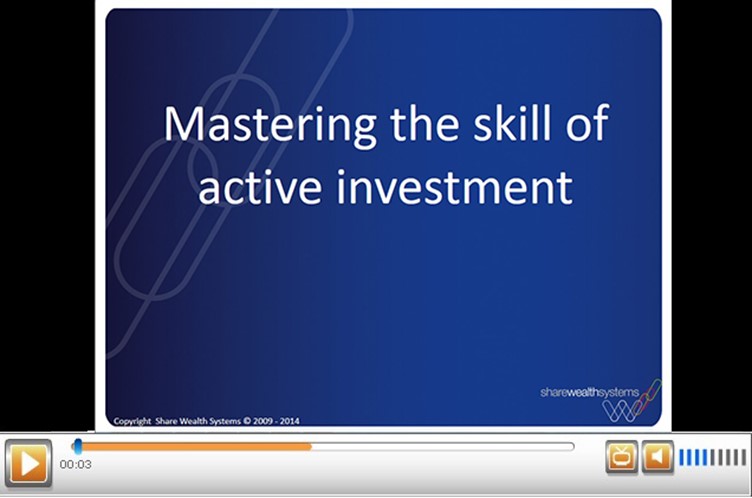We all love mastering a new skill that enriches our lives. The good news is that it doesn’t take rocket science to master a skill.
Most people, however, want results quickly. They want to become the best at something fast. Well, unfortunately, fast doesn’t equal mastery.
You can learn the practical steps that are required to master the art of active investment in this video presentation that I recorded last night. Trust me. The secrets to mastery are not complex. It’s just a matter of working the right way, not necessarily the hard way.
It’s not enough to be smart – you need to always be getting smarter. After all, self improvement is the key to getting ahead.




Gary. You take too long to get to the point. You are boring me and I don’t have the time to listen to all that hype in return for a snippet of truth. You are a good teacher but you need to get to the point a bit quicker. Good Luck
Hi Gary,
Bruce Kovner when asked if he thought that the trend-following system approach will eventually self-destruct under the weight of its own size and that most of these systems are using similar approaches answered. “I think that is true. The only thing that will save those technical systems is a period of high inflation, when simple trend-following methodologies will work again. However, there is no question in my mind that if we have stable, moderate rates of inflation, the technical trading systems will kill each other off.”
I don’t consider what he says falls under “noise.” So, if you have a chance someday?
Cheers, Neil
Response to Comment by Ray:
Thanks Ray, duly noted. Plenty of points to make tho in this caper of active investment.
Regards
Gary
Response to Comment by Neil:
A few comments.
I have read this from many sources but I have never seen any research anywhere to back it up.
It is easy to make throw away statements that might appear to make sense but to demonstrate one’s statements through research is a very tough.
One thing that has been demonstrated in the markets is that what appears to be the truth is typically the opposite of the actual truth, that is, a paradox. The market is full of paradoxes.
Talking of research, our research and live trading through many market conditions on the NASDAQ and ASX shows that trend following works over a large sample of trades.
Our research and live trading is not the only source of such outcomes. If one looks for confirming information on trend following one will find plenty of research that demonstrates what we have shown.
Some questions:
Define “weight of its own size”. How big is this?
Does he mean systems that trade a single futures markets?
Or equities index futures contracts?
Or market wide equities systems?
Late 2002 – late 2007 certainly wasn’t a high inflation period and trend following systems smashed the equity indices over this five year period on both the ASX and NASDAQ. What year did he make this statement? In the late 80’s early 90’s in one of Jack Schwager’s books?
Lastly, Bruce Kovner makes a massive assumption that people using a system, whether they be money managers or individuals, use it correctly and continue to use it through thick and thin.
The fact is that people tinker, know better, think they can do better, get filled with fear when in drawdown and cease using the system, or simply don’t have the patience, trust, mindset or perseverance and are not prepared to work on these skills to continue to use a system, regardless of which system it is. This means that a system rarely reaches the “weight of its own size”.
If one doesn’t use a systematic approach then one will use a discretionary approach. Does a discretionary investor know what their edge is and if they don’t how much are they prepared to lose to determine an edge?
Trust this provides some food for thought.
Regards
Gary
Gary, I thought I was buying into a system/process where I could trust the science/research and only spend “20 minutes per day” on a process to outperform the ASX (as indicated in my SPA3 demonstration by Shane). I dont want to be a runner, I want Spa3 to run for me. I dont want to be reading trading books, I want you to read them and fine tune spa3.Is this reasonable?